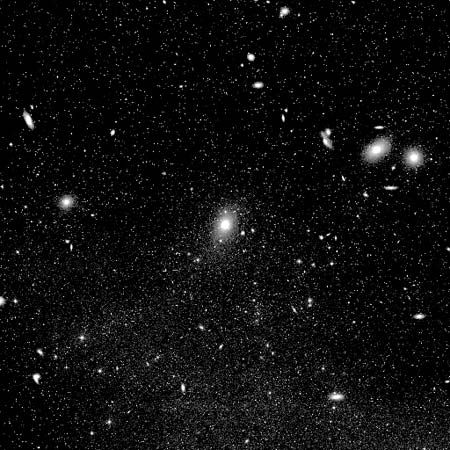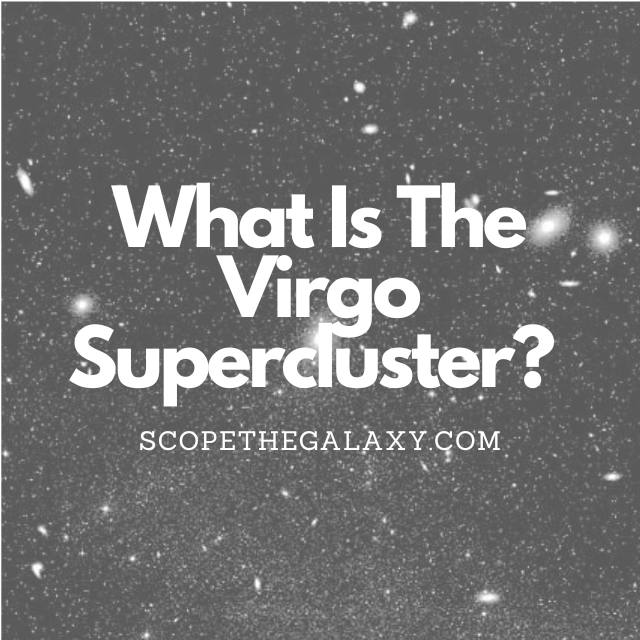*This post may contain affiliate links. This means we may make a commission if you purchase an item using one of our links*
The Virgo Supercluster is a vast collection of galaxy groupings that span millions of light years. Our own galaxy, the Milky Way, is one of around 45,000 galaxies that make up this vast Supercluster.
Continue reading to discover the incomprehensible size of the Virgo Supercluster, how it derived its name, and the materials that comprise a Supercluster. In addition, learn why the Virgo Supercluster might be even bigger than we first thought and how research is allowing scientists to develop their understanding of these cosmic entities.
How Big Is The Virgo Supercluster?
Table of Contents
A galaxy is composed of billions of stars and their planets, along with gas and dust, all held together by gravity. A galaxy group contains less than 50 galaxies, while a cluster contains 50-10,000 individual galaxies.
The average Supercluster consists of about 10-12 galaxy clusters, each of which houses hundreds of thousands of individual galaxies. These are among the largest cosmic structures and may account for as much as 10% of the Universe.
The Virgo Supercluster spans a massive space region stretching across 110 million light-years; it contains both the Virgo Cluster and the Local Group. The Milky Way galaxy belongs to the Local Group along with Andromeda and various other galaxies.
A study conducted in 2014 suggests that the Virgo Supercluster may be one part of an even larger supercluster called Laniakea. Still, despite this massive expanse, the Virgo Supercluster stretches across more than 1% of the observable Universe.
Recent research has shown that the Virgo Supercluster is not gravitationally bound; instead, each galaxy within this mass is moving toward a spot known as “the Great Attractor.” You might assume that the Local Supercluster of galaxies is moving toward Virgo, but you’d be wrong. Instead, all clusters – including the Virgo cluster – move toward the same area of space.
And it’s this movement, also known as peculiar velocity, that can indicate where the center of a mass truly is, leading scientists to hypothesize the Virgo Superclusters position within the larger Laniakea Supercluster.
Why Is It Called The Virgo Supercluster?

Virgo is among the initial 48 constellations cataloged in the second century by the Greek astronomer Ptolemy. This ancient constellation was known as “the Furrow” to Babylonians and the goddess Ceres in Roman times.
The constellation’s name Virgo comes from Persephone, the daughter of Demeter in Greek myth. Legend says that Hades, God of the underworld, kidnapped Persephone (or Virgo) and made her his wife. Still, after some negotiation, Hades agreed that Persephone could spend half the year in the underworld with her husband and half of the year on Earth with her mother.
The ancient Greeks believed that Demeter, the goddess of agriculture, neglected the crops whenever her daughter was trapped in the underworld; hence why we experience seasons. This also explains how the Virgo constellation – visible during the spring and summer months – derived its name.
The Supercluster surrounding the Virgo constellation would go on to be named the Virgo Supercluster. This was mainly because the research at the time of discovery suggested that the Virgo Cluster could be the Supercluster’s center.
Ongoing research has disproven this theory by demonstrating that the galaxies within the Supercluster are not moving toward the Venus cluster, but the name has stuck. It is, however, also referred to as the Local Supercluster, which could become the favored name as more is understood about this massive collection of galaxies.
What Is The Virgo Supercluster Made Of?
The brightest star in the Virgo constellation is Spica, the 15th brightest star in our night sky. This giant blue star is located roughly 260 light years from Earth and has a magnitude of 0.98.
Another notable feature of Virgo is that it houses the first exoplanet that astronomers discovered some 30 years ago.
Still, Virgo is probably most famous for its large gathering of galaxies called the Virgo cluster. Within this cluster are more than 2,000 individual galaxies of varying shapes and sizes; the center of this galaxy is an estimated 54 million light years from the Milky Way.
Bigger still is the Virgo Supercluster, which contains both the Virgo and the Local clusters. Through research, scientists have discovered that each individual cluster within these superclusters is intertwined in a kind of cosmic web.
Within the web are “nodes” where the gas filaments that compose the webs meet, and groups are held together. Still, between the nodes and filaments are vast expanses devoid of material, which are known as voids.
Nodes have excess material, while voids have lower-than-average amounts. But both regions are significant in moving the galaxies toward the Great Attractor.
Put simply, a Supercluster contains groups of galaxies (sometimes hundreds of thousands of individual galaxies). Within each of these galaxies is a massive collection of dust, gas, stars, and their solar systems. The Supercluster is the amalgamation of all material within, though the galaxies aren’t always held together by gravity – sometimes, they are just moving in the same direction.
Summary
The Virgo Supercluster is the Local Supercluster (the closest) to our own galaxy, the Milky Way. In fact, our galaxy is a part of this mass collection of galaxies that are steadily traveling toward the Great Attractor.
Every Supercluster contains about a dozen galaxy clusters and sometimes hundreds of thousands of individual galaxies, all with a vast collection of stars, planets, gas, and dust.
References
All about the Virgo Supercluster | Astronomy.com
The Virgo Supercluster – The Planets
The Virgo Supercluster (futurism.com)
Imagine the Universe! (nasa.gov)
http://www.seasky.org/constellations/constellation-virgo.html#:~:text=Its name means “virgin” in,was the mother of Prosperina.

